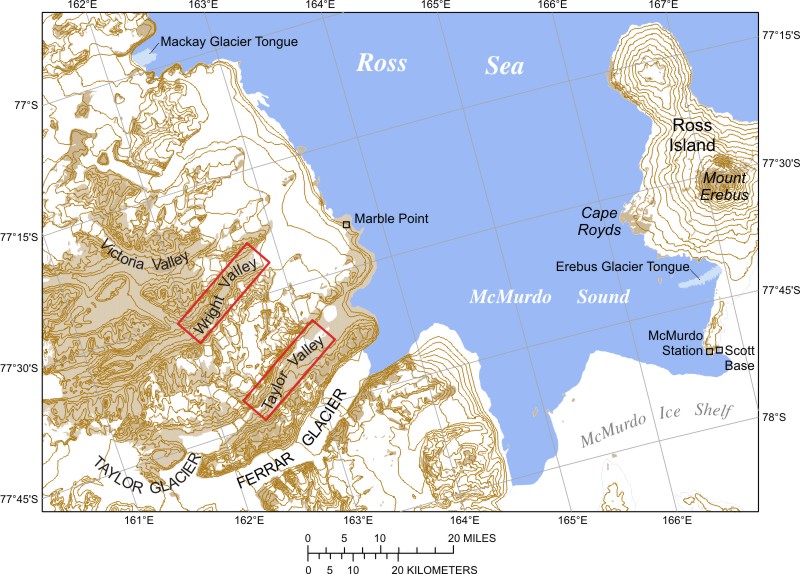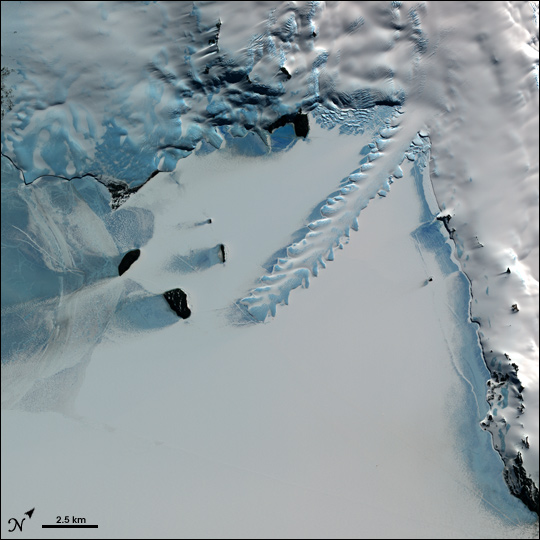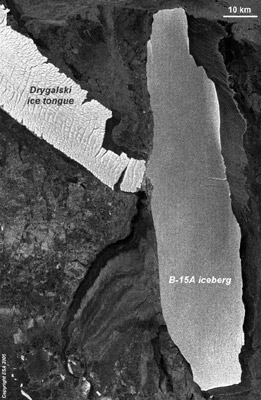Ice tongues are a fascinating area of study.
They have much to teach us about the life cycles of glaciers.
Many, many years ago, a glacier stuck out its tongue. Recently a rather large chunk of ice, over the course of about two days, broke off just under half of the ice tongue. I wrote about it here. The world's media, perhaps having a shortage of stolen emails and Al Gore movies to write about, trumpeted this non-event as a harbinger of doom, gloom and kaboom!
This event will, we are (mis)informed, kill sealife and, by interrupting the oceanic circulation systems, plunge Europe into a new ice age. Now, a beer-swilling couch potato may accept that uncritically as THE TRUTH. However, you, dear reader, being here for the scientific facts, may find the truth to be much more exciting: glaciers stick out their tongues every chance they get. Which is all right as far as it goes, perfectly acceptible in polite glacial circles. However, the glacier book of etiquette allows for only so much rudeness: if a glacier sticks its tongue out too far, it will get it snapped off.
The formation of ice tongues.
Any glacier flowing out from its constraining valley on land will usually form a curved foot. This is due to the lateral flow of the ice as its longitudinal flow is impeded.
Any glacier flowing unimpeded into a large enough body of water will tend to form an ice tongue. There is only one known ice tongue in a lake: the Battye Glacier ice tongue in Beaver Lake, Antarctica. The length of an ice tongue depends on the rate of glacial flow into the body of water and the rate of calving. The more shelter there is for the ice tongue, the longer it will grow, all other relevant factors considered. Sheets of sea-ice also serve as a protection from waves and berg strikes.
The map below shows two glacier tongues in the McMurdo Sound area:

Image source: Wikimedia, public domain.
The Erebus glacier in Antarctica comes down from Mt. Erebus and protrudes off the coast of Ross Island, forming an 11-12 km long ice tongue—a long and narrow sheet of ice projecting out from the coastline. The Erebus Ice Tongue is the serrated, blue-rimmed “knife” extending toward image center from the upper right out into snow- and ice-covered McMurdo Sound. Beneath the smooth white expanse is the Southern Ocean.

Text and image source: earthobservatory.nasa.gov
A glacier may carry substantial amounts of mineral to the ocean. As the glacier calves, and the ice melts, there may be a build-up of sediment. This 'glacial land reclamation project' could end up supporting and protecting the ice tongue.
A floating ice tongue is a cantilever: a beam supported at one end only. It is subjected to various forces tending to break, erode or melt it. A much-neglected force is the tide. As the tide rises and fall, the tongue will flex up and down. The lower part, being fairly plastic, will flex, but the upper, more brittle parts will tend to crack.
I suggest that this offers a mode of crack expansion. As the cantilever beam of ice sags with a lower tide, cracks form in the upper parts. Debris drops into the cracks and lodges there. As the tide rises the cracks tend to close and the considerable forces would tend to 'weld-repair' the crack due to regelation. However, even small quantities of debris will prevent perfect closure of the cracks. Over a large enough number of tidal cycles the cracks will grow until a calving event occurs.
Hogging and sagging
If an ice tongue extends by floating into a body of water and then grounds itself it will be loaded in the same way as a bridge. It will be subjected by tides to hogging and sagging forces. As the tide falls the ice will be subjected to sagging between the two points of suspension. If the ice grounds along its sagged portion that may subdivide the beam into linked sub-beams which in turn will be subjected to sagging.
As the tide rises, if the ice floats free at its outer end then it will be loaded as a cantilever. However, if there is considerable contact area at the grounding point the beam will be subjected to considerable hogging forces before it pulls free of the bottom. The hogging forces will act so as to curve the beam upwards.
I suggest that a crack formation and growth mechanism similar to that described above will promote calving. The calving point will lie close to the mid point between grounding points. The ice tongue will likely calve readily at its tip due to greater exposure to debris and due to pounding. Pounding is the hammering action imparted by waves to a floating body in contact with the bottom.
On balance, a break about halfway along any ice tongue which is grounded at its tip is the most likely outcome of the tidal forces acting on it. The only difference that size makes is this: the greater the mass, the greater the total thermal energy that the ice tongue must absorb before it breaks. But it must break sooner or later.
The image below, adapted from an image in the Mertz Glacier event press report, shows my rough estimate, in orange, of the areas of grounding. If that estimate is even broadly correct, then the cracking and breaking off of the new berg is entirely to be expected as the outcome of ordinary, well-attested mechanical processes. The final break will be sudden, but it will be the final step in a long chain of events.

...
The collison of B-9B with Mertz has a precedent in the 18 April 2008 B-15A / Drygalski collision. Perhaps the world's tabloids didn't report it because it seemed so insignificant: just the tip of the iceberg.

Image source: http://www.esa.int/esaCP/SEMEGLW797E_index_0.html
--------------------------------------------------------------
Discussion:
The proposed method of crack formation and growth should cause the ice tongue to grow longer as crack-closing forces are opposed by debris. Meltwater entering cracks and freezing would add to the effect.
I suggest that a note be made of these exact dates: when a major crack forms, when a berg becomes grounded, when it pivots around a grounding point, and when it floats free. These dates are predicted to correspond with the highest tides. A body being neaped - becoming grounded on a spring tide or other exceptionally high tide - will not float free without the application of considerable force until the tide is again at approximately the same level.
---------------------------------------------------------
Related / further reading:
http://www.aad.gov.au/default.asp?casid=2839
http://www.agu.org/pubs/crossref/2007/2006JF000599.shtml
http://www.absoluteastronomy.com/topics/Jakobshavn_Isbr%C3%A6
http://en.wikipedia.org/wiki/Strength_of_ships
http://scitation.aip.org/getabs/servlet/GetabsServlet?prog=normal&id=JMO...





Comments